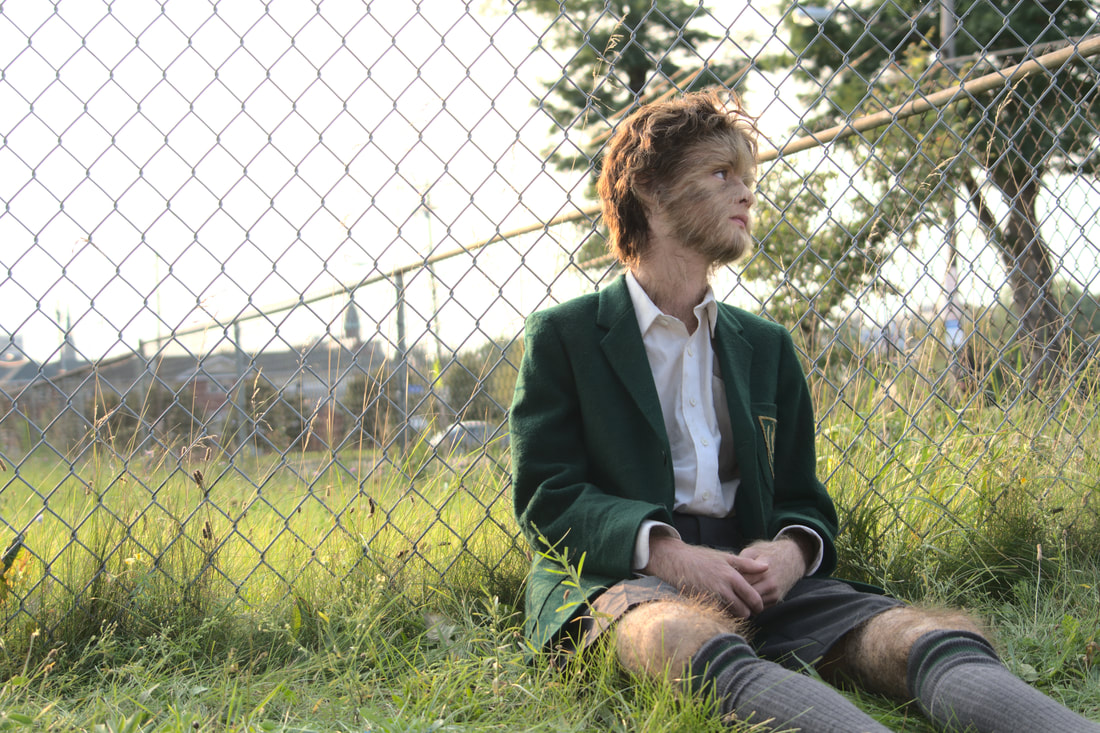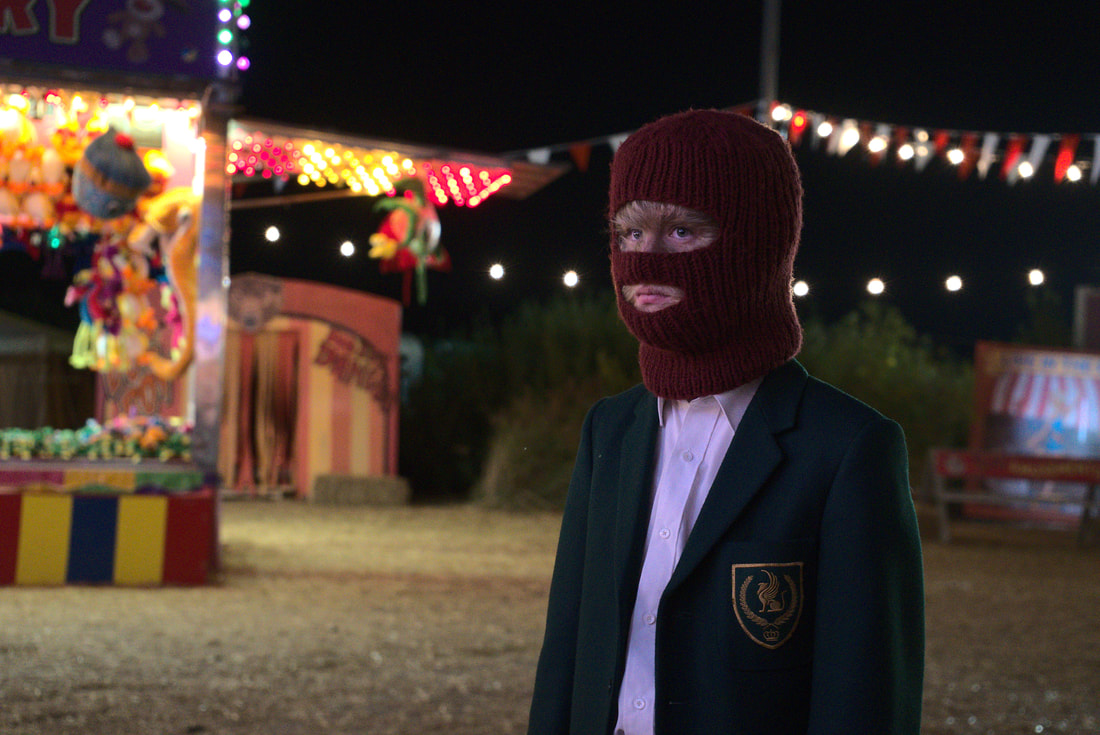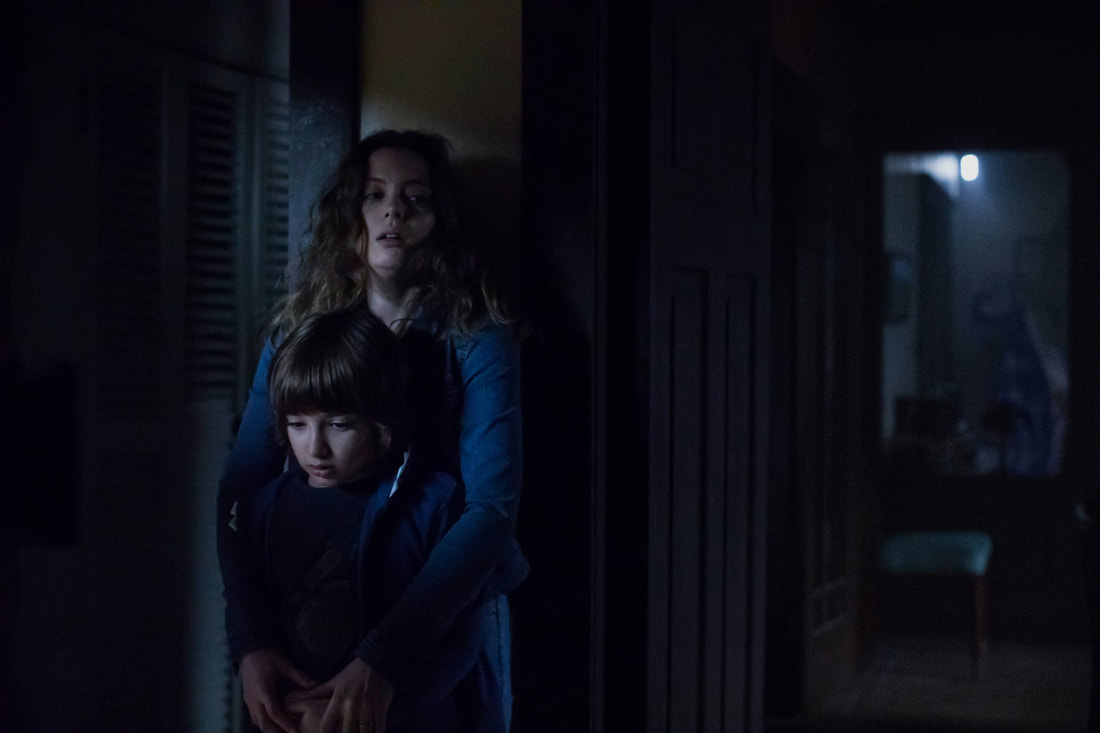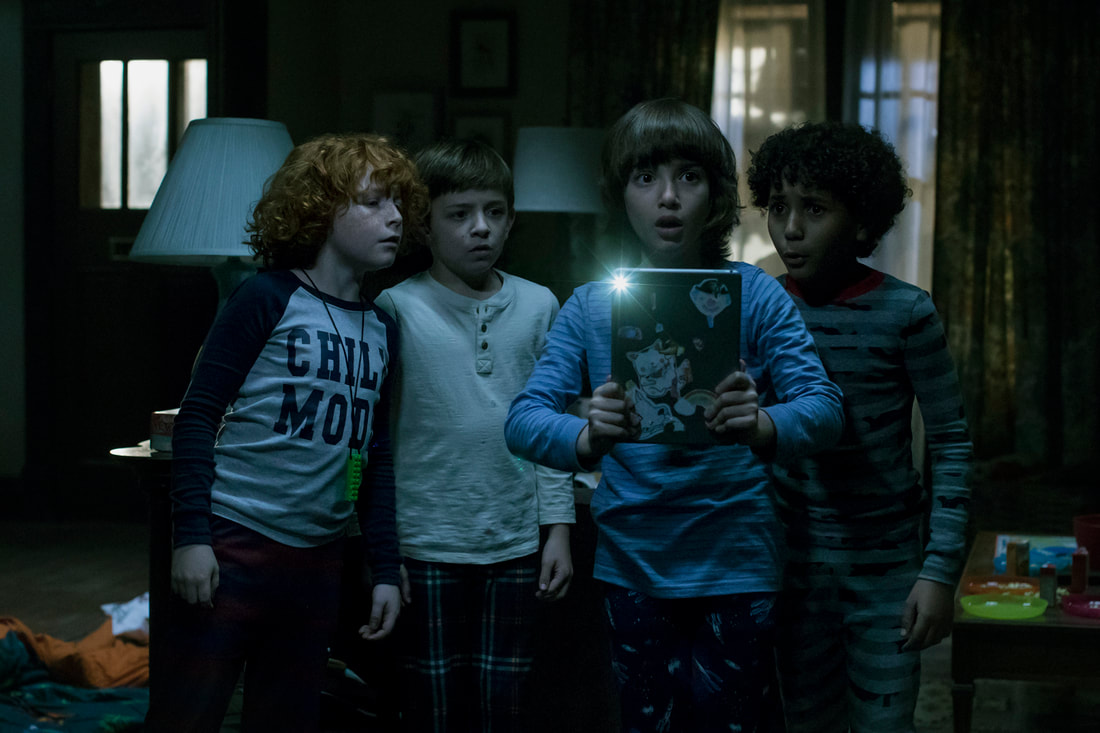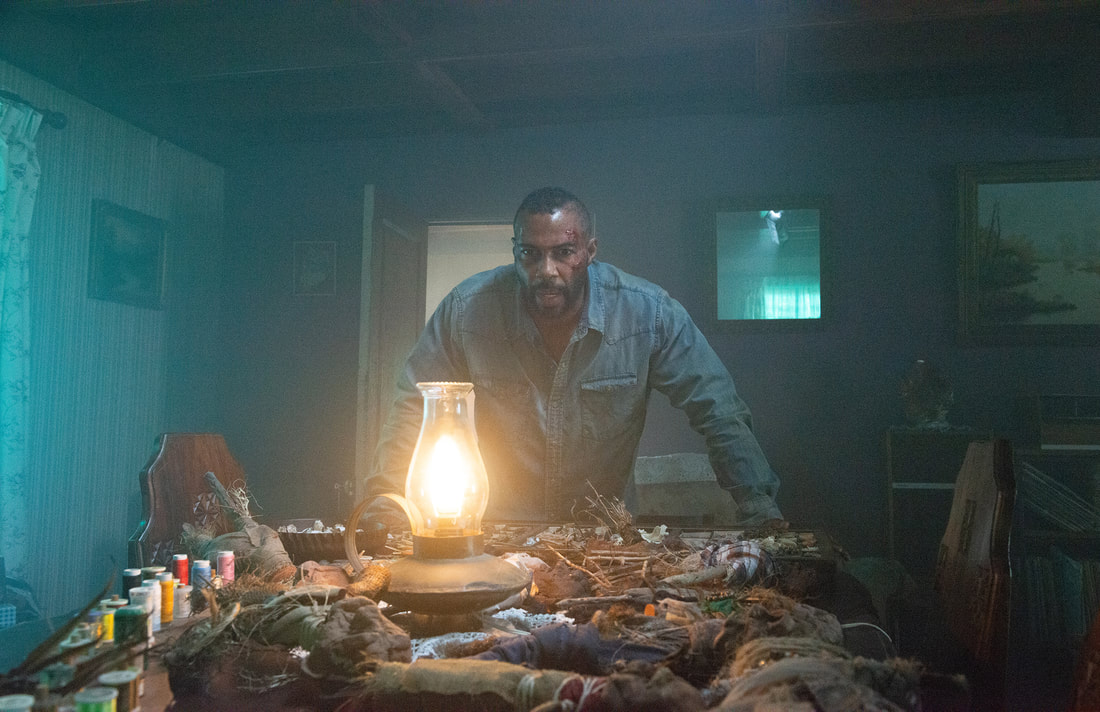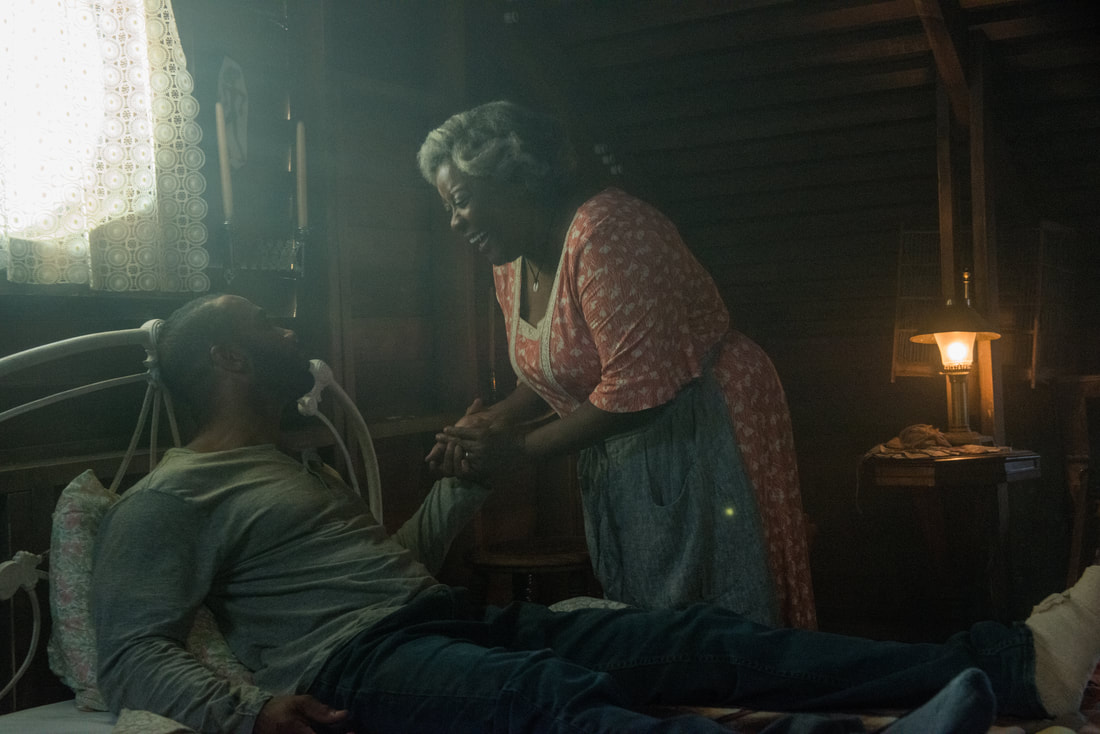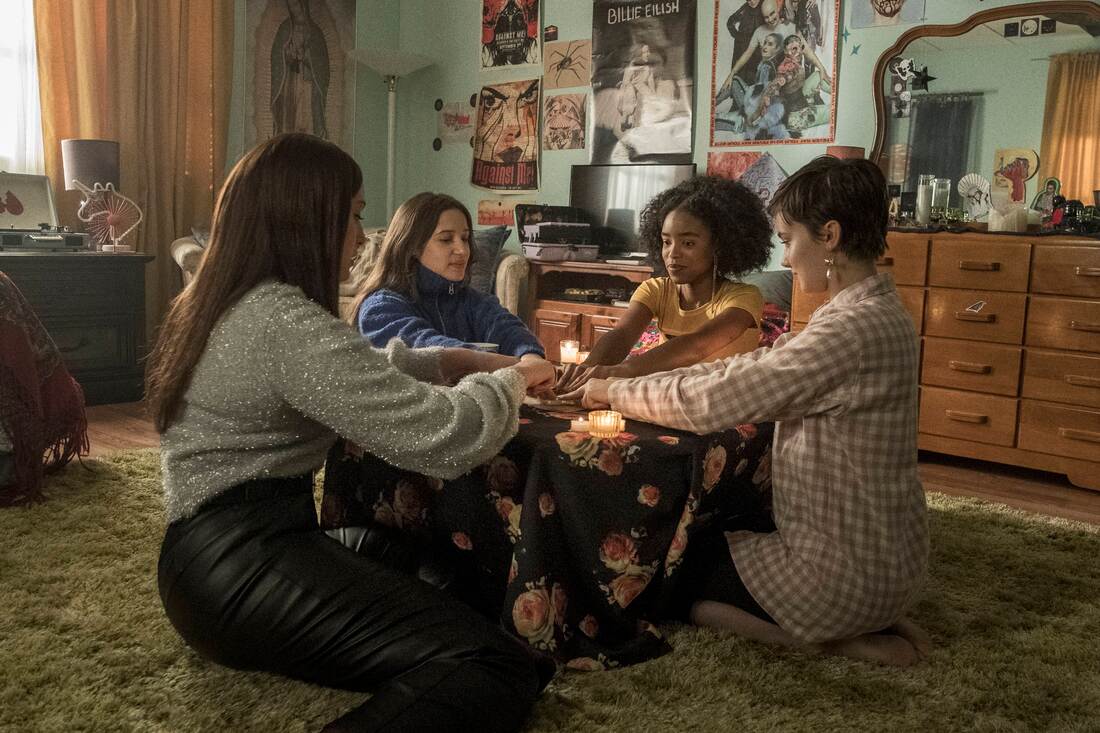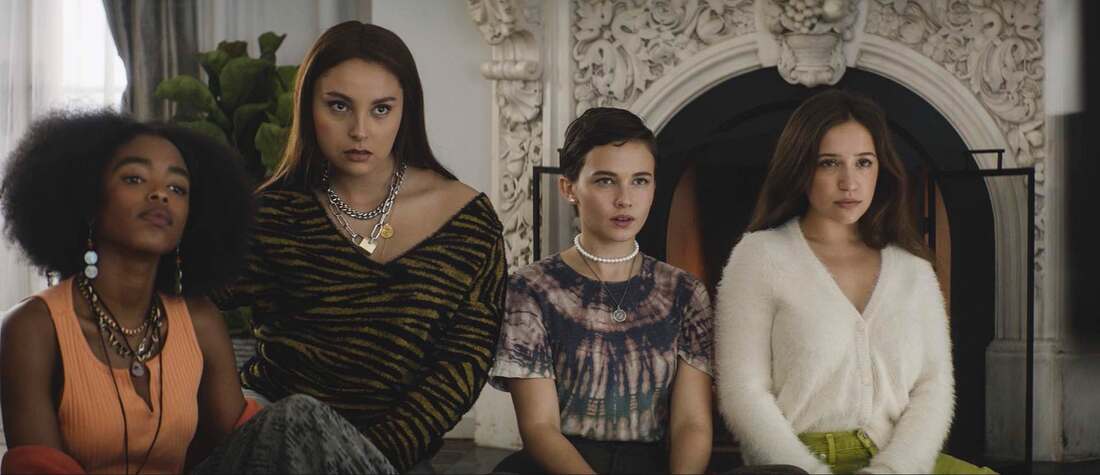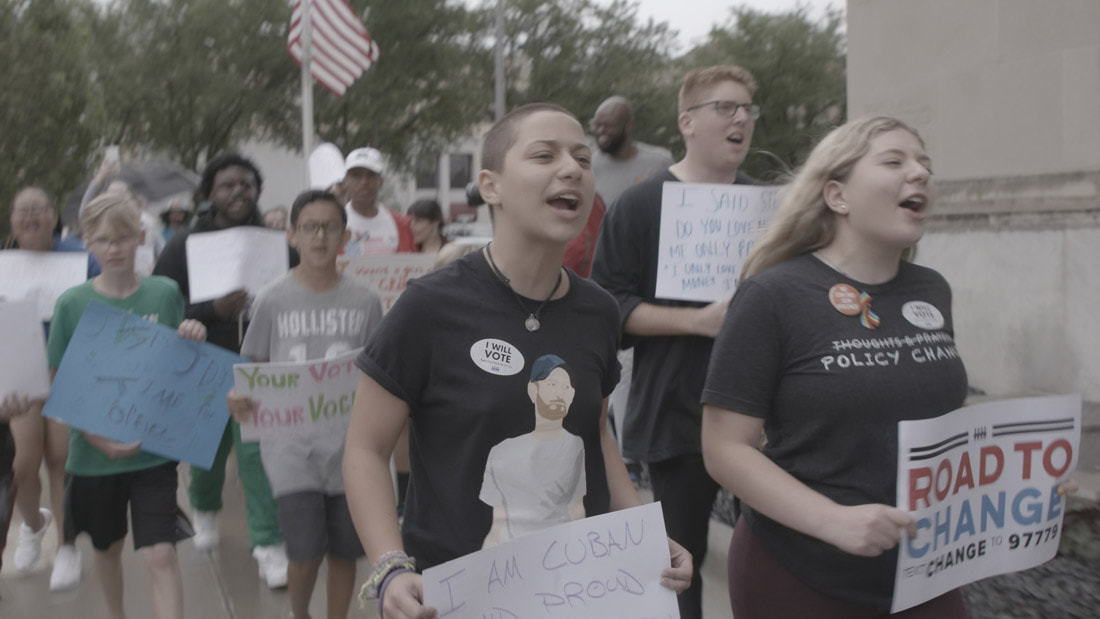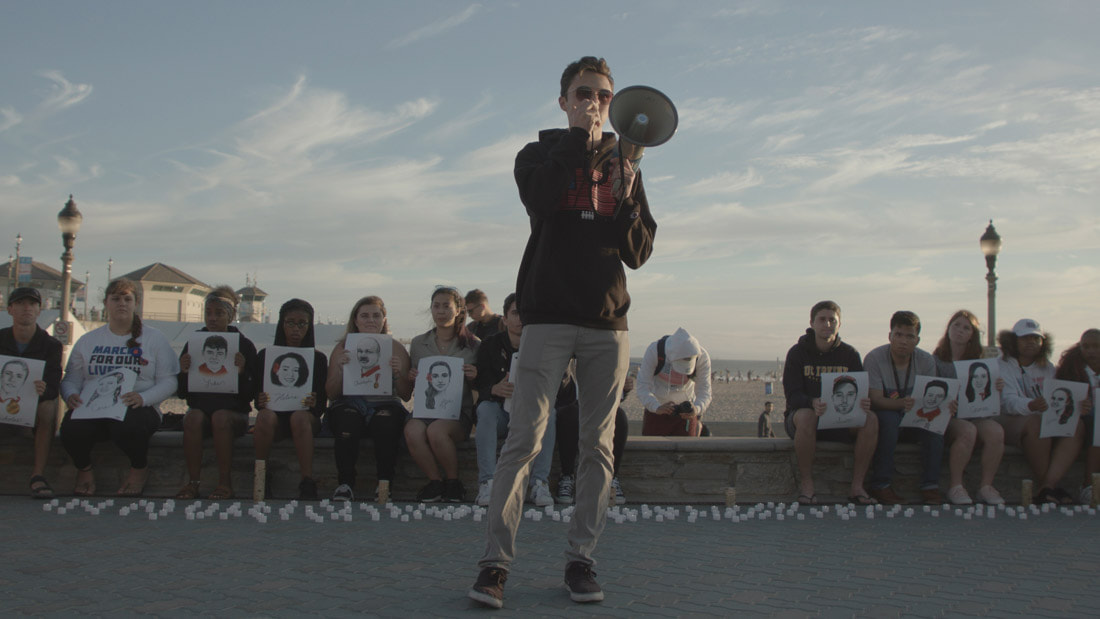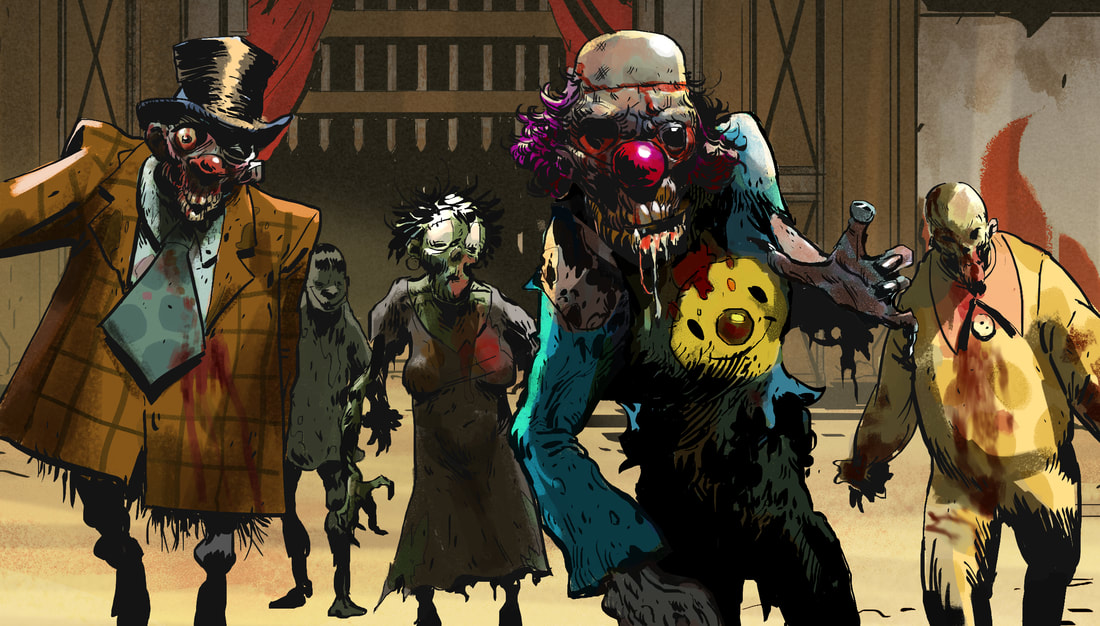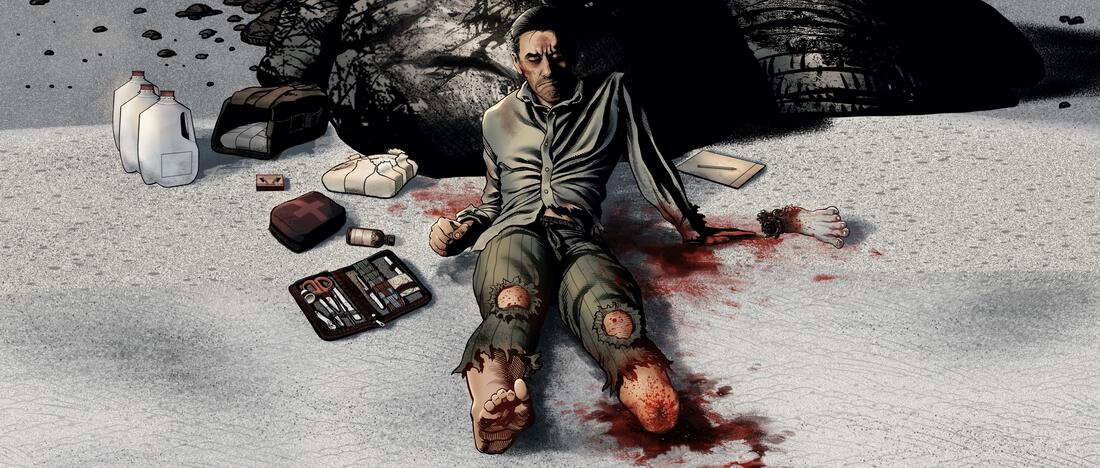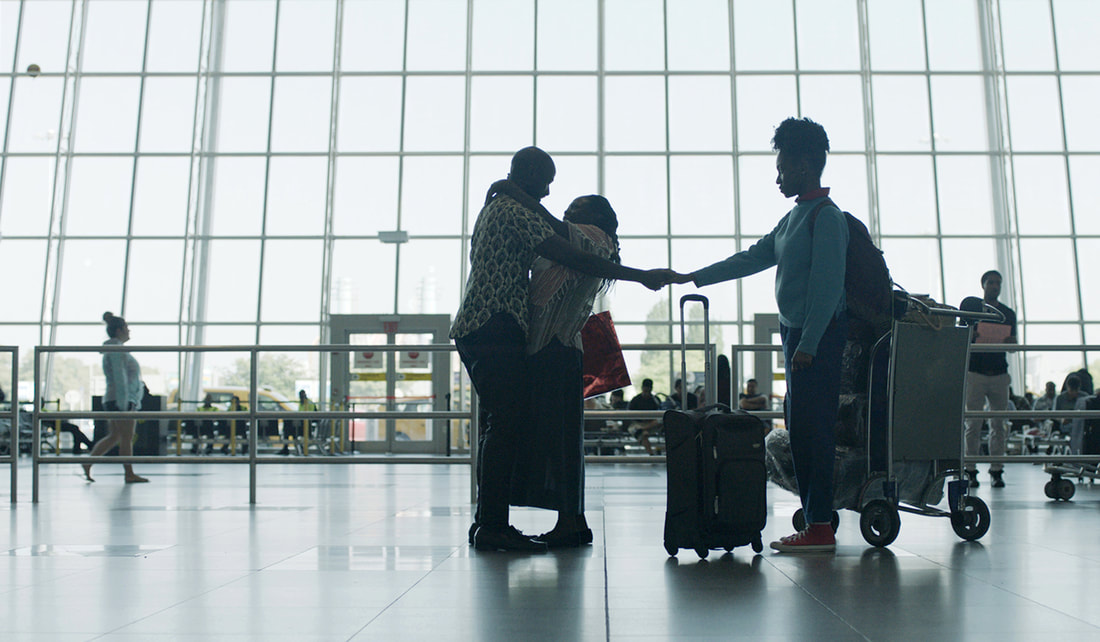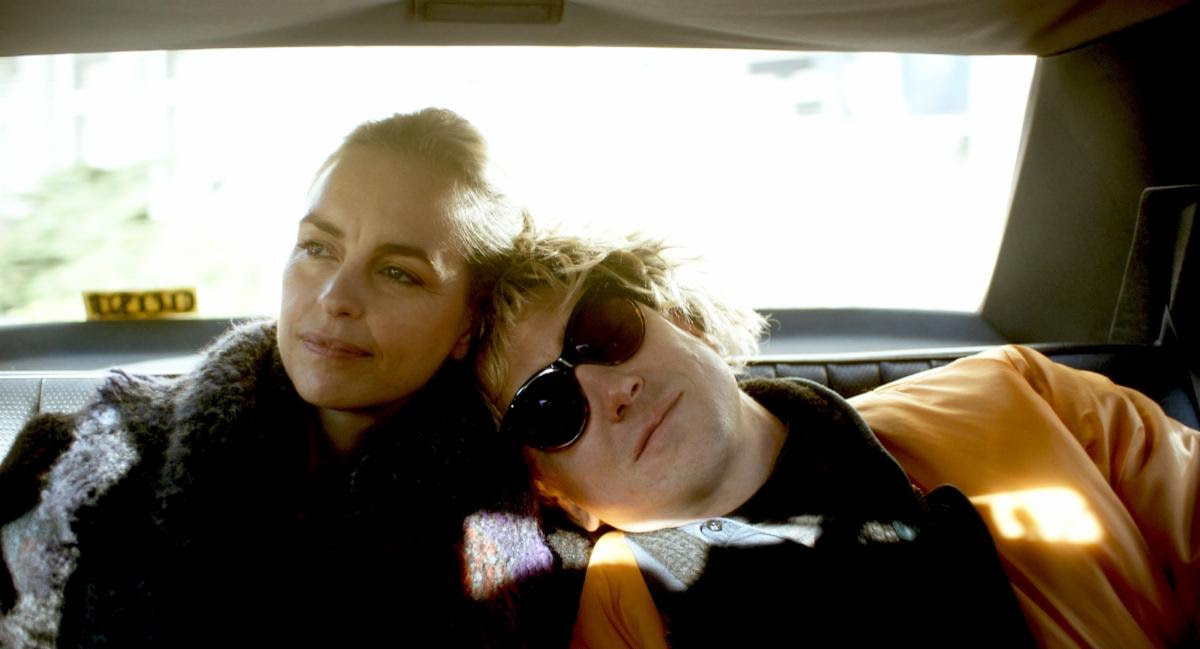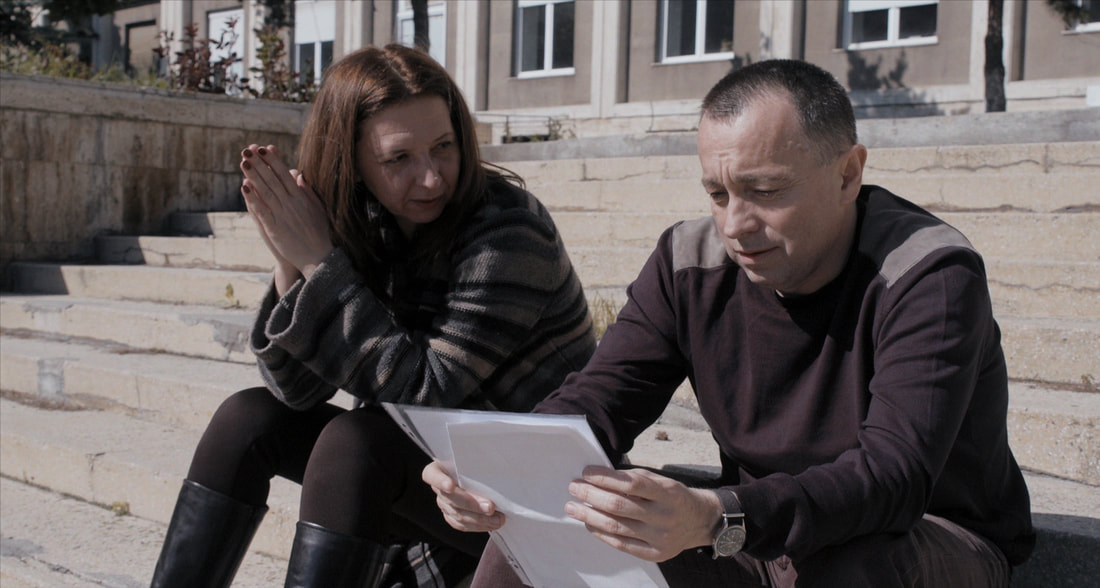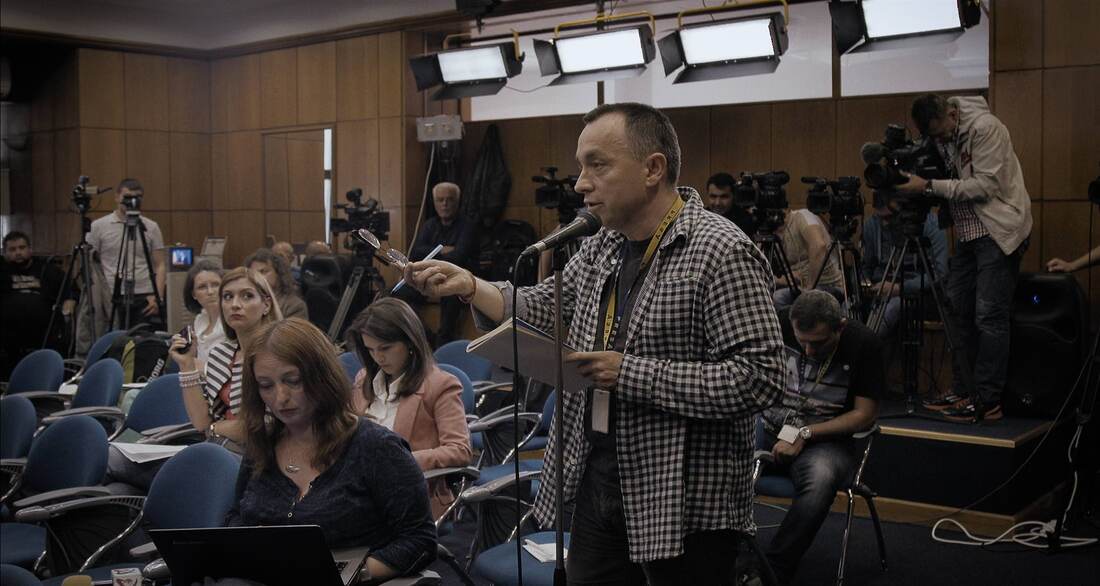|
Review by Sean Boelman
Directed by Martin Krejcí and written by Olivia Dufault, The True Adventures of Wolfboy feels as if Tim Burton tried to do a werewolf movie, for better or worse. A fun but not entirely original adventure, this film’s biggest struggle is finding a tone, as it’s a bit too dark for kids but also too silly for most adults.
The movie follows a young boy with a rare condition that causes his body to be covered with hair as he runs away from home in search of his estranged mother. The film hits all the predictable beats, even some outdated ones, like joining the circus, causing Olivia Dufault’s script to almost ironically remind the audience that it is not the journey, but the destination that is important. As one would expect, the movie has at its core a message about compassion and accepting others not despite, but for their difference. That said, subtlety is most certainly not the name of the game here, and the film essentially spells out the moral of the story in a straightforward (but admittedly moving) dialogue scene. At less than an hour and a half in length, the movie breezes by. The narrative is divided into sections, each of which follows the protagonist as he goes on another adventure. Some are a little more grounded, like throwing a massive birthday party, whereas others go all-in on the fantasy element.
The thing that seems to be missing here are memorable supporting characters. While the misfit protagonist is certainly the hero of the story, his sidekicks and villains that he meets along the way are all stock characters. What could have allowed this to really stand out from the sea of other family drabble would have been someone else to remember.
That said, the cast that was assembled for the project is full of talented actors, and they are able to make some of the flat characters more interesting. The almost always big John Turturro gives yet another lovably flashy turn as the duplicitous carnie who has it out for the hero. Jaeden Martell brings some nuance to an (almost frustratingly) obvious role. And Chris Messina, Chloë Sevigny, and Stephen McKinley Henderson round out the supporters with small but powerful parts. One would be remiss if they didn’t acknowledge the production design and make-up work that went into creating the film. It’s an immersive style that really throws the viewer into this uncanny world. Still, there are some portions that are a bit over-the-top, especially the score which is pretty generic. The True Adventures of Wolfboy is fun, but it owes a lot of artistic influence to better, more authentic movies. Yet even if it is mostly a film of in-betweens, it’s worth watching because of the strength of the cast alone. The True Adventures of Wolfboy hits theaters and VOD on October 30. Rating: 3/5
0 Comments
Review by Sean Boelman
Although Halloween festivities will hardly be the same this year, Jacob Chase’s techy horror flick Come Play will scratch the spooky season itch for thrills and chills. Despite being a bit heavy-handed with its message, a few legitimately scary moments and an intriguing monster make this a solid addition to the genre.
The film follows a young boy who, struggling to fit in with the other kids at schools, takes up an obsession with his devices and accidentally unleashes a malevolent spirit that manifests itself through screens. It’s a family-centric horror movie in a way that feels reminiscent of a modern Poltergeist, albeit with less atmosphere and more jump scares. The major shortcoming of the film is the fact that it is too on-the-nose. Chase is obviously concerned with the way that people have cut themselves off from the rest of society, saying so directly through the dialogue and even using a character on the spectrum who physically struggles to connect. And while the depiction of the character is surprisingly respectful, the use of autism as a plot device is still problematic. Additionally, the character development is rather conventional. It’s a common cliche, particularly when movies feature characters with learning disabilities, for family drama to be a significant subplot. As if genericism wasn’t enough, this aspect of the conflict goes out the window in the second act only to be readdressed in the epilogue.
Gillian Jacobs carries most of the film, and her performance has some ups and downs. When she is supposed to be more subtle and grounded, such as in the more emotional moments she shares with child actor Azhy Robertson, she brings a lot to the table. In the more over-the-top, horror-driven scenes, she feels out-of-place. John Gallagher Jr. does a great job in his few scenes, but isn’t used nearly enough.
That said, the thing that will be drawing most viewers to this movie is the promise of getting scared, and there are a handful of scenes that are beyond effective. Chase is able to find the right balance between showing the monster and keeping the audience in anticipation to make the jump scare hit at just the right time, catching even the most seasoned of horror fans off-guard once or twice. Stylistically, Chase does some really interesting things, especially with the technology-oriented framing device. Although there are some age-old tricks like flickering lights used to signify the presence of evil, a lot of what makes this film so creepy is that the characters (and therefore the viewer) never really know if he’s there until it’s too late. There are also a few scenes shot as if they are seen through devices, and those have an interesting effect. Come Play is a lot better than one would expect, having an earnest but occasionally overbearing message and some strong frights. This is the type of horror escapism that is definitely welcome right now. Come Play hits theaters on October 30. Rating: 3.5/5
Review by Sean Boelman
Were it not for the fact that this month is so lacking in mainstream horror content, Mark Tonderai’s Spell likely would have gone under the radar as a niche B-movie. Thanks to good performances and some disturbing imagery, this backwoods horror tale is able to overcome most of its narrative shortcomings, if only barely.
The film follows an upper-class man who, while on the way to a funeral in Appalachia, gets into a plane crash and wakes up in the attic of an old couple who may be up to something more sinister. With the way the movie starts off, it almost seems like it is going to be a Black spin on Deliverance, minus the offensiveness, but it also isn’t as culturally sensitive as it may initially appear. Kurt Wimmer’s script is heavily centered around the Hoodoo tradition that traces back to the time of slavery in the South. And while the film doesn’t quite otherize the Black Appalachian culture, there’s almost a xenophilia to its approach. The movie feels as if it's obsessed with their traditions, but in a way that is too distant to truly understand them. As is the case with most lower-budget horror films, the first act drags significantly as the exposition is dumped, and then the other two-thirds feel rushed, shoving all of the creativity and intensity into a short period of time. Perhaps even more frustrating is the fact that the ending is so anticlimactic and predictable that it leaves a sour taste in one’s mouth.
Wimmer also fumbles the character development. The inciting incident of the script is the fact that they are heading to a funeral, and yet this theme of family is almost completely abandoned after the first twenty minutes. At that point, it turns into a much more basic fight for survival, and while there is excitement there, it’s a shell of the movie it should have been.
The main saving grace of the film is Loretta Devine, who gives a devilishly fun performance in her supporting role. An otherwise average horror movie can be significantly elevated by a memorable villain, and Devine’s character fits that bill and then some. Omari Hardwick’s lead performance is fine, although he’s really just another hero fighting back against an evil antagonist. Tonderai also does a good job of shooting the film in a way that is eerie and atmospheric. The production design is minimalistic but is able to make the viewer feel immersed in this world that exists in the modern world yet is trapped in the past. As for the effects for the more horrifying moments, they’re surprisingly great. Most of the problems with Spell are in its script, not its execution. It’s entertaining and creepy enough to be a satisfying watch, even if the narrative weaknesses keep it from being as disturbing as one would hope. Spell hits theaters and VOD on October 30. Rating: 3/5
Review by Sean Boelman
The thing that made the 1996 supernatural horror flick The Craft such a beloved cult classic is that it connected with the teens of the day. Zoe Lister-Jones hopes to recapture that magic (or more accurately, witchcraft) with her reboot The Craft: Legacy, but in trying to appeal to both ‘90s kids and today’s youth, it ends up being an enjoyable but superficial witch saga.
The film follows a teenage girl who, after moving to a new school, discovers that she has supernatural powers and forms a coven with three of her classmates. Compared to the original, the story here is much more conventional, with a more generic villain, although Lister-Jones deserves some significant props for not simply rehashing the story of the first. Much of the conflict feels like it is included out of obligation rather than a legitimate storytelling need. The first hour, which really just features the four characters having fun as they discover their powers, is inarguably the most enjoyable portion. By the time the villain becomes a more major factor in the third act, it feels as if the story is scrambling to its end. Another one of the movie’s misgivings is that its ideas feel a lot more mainstream. A significant appeal of the original is how it appeals to counterculture. Since ‘90s nostalgia has become part of pop culture at large at this point, it often feels like the movie is trying too hard to be cool rather than being more naturally fun.
That said, Lister-Jones does a very good job with the character development. The biggest strength of this reboot is the fact that all four of the girls are written in a compelling way, and the dynamic between them is both believable and fun. As a film about friendship, this delivers in a sentimental but honest way.
Cailee Spaeny is good as the main teen witch, bringing a charming naivete to the role. Lovie Simone, Gideon Adlon, and Zoey Luna round out the coven and all do a solid job. As for the adult cast, the two big names are Michelle Monaghan, who is decent but underused, and David Duchovny, who goes too over-the-top. Visually, the Twilight influence is palpable (the script even name-drops the series and its stars on multiple occasions). It’s less emo and more hipster, the four girls and the visual style as a whole being fashionable and bright. That said, the film still makes it known that it very much wants to be in the ‘90s, with the first needle drop being “Hand in My Pocket”. For what it is, The Craft: Legacy is an enjoyable little teen movie. It’s definitely not going to connect with today’s youth like the original did in its time, nor is it going to revitalize the property as a hit franchise, but as a nostalgia trip, it’s decent enough. The Craft: Legacy is now available on VOD. Rating: 3/5
Review by Sean Boelman
Documentarian Kim A. Snyder has spent much of her recent career commenting on the issue of gun violence that has plagued the country, particularly in regards to school shootings. Her newest film Us Kids isn’t the first movie on the Parkland shooting, nor is it without its flaws, but it’s a step in the right direction.
In the film, Snyder follows some of the survivors of the Parkland shooting as they become activists speaking out against gun violence and in support of legislation that would prevent tragedies like this from happening again. At this point, with all the news coverage, everyone knows this story, but Snyder takes a more personal approach to the subject. Most of the other documentaries so far have focused on the more outspoken and higher-profile voices that surfaced after the tragedy, like David Hogg and Emma González. Although both of them have a part in this documentary, Snyder focuses more on the people whose experiences and perspectives haven’t gotten as much screen time. Something that people often forget when telling this story is that these activists have wisdom beyond their age, but as the title suggests, they were kids when this tragedy happened to them. Snyder does a great job of humanizing them as more than just their trauma by having multiple sequences that simply show them being kids doing things that kids do.
Obviously, as is the case with the rest of Snyder’s movies, there is a clear message to be taken away about the epidemic of gun violence. But what makes this film stand out is the fact that it succeeds in exploring the nuances of the discussion. It’s not black-and-white by any means, and Snyder is among the first filmmakers to truly acknowledge that.
Additionally, Snyder doesn’t go for the easy emotional punches. There is minimal use of footage from the incident, and to good effect, but the focus is more on getting the audience to recognize the power in how they are taking the pain they have suffered and using it to educate and inspire the rest of the world. Snyder’s fly-on-the-wall style is very effective here. The largely interview-based method that has defined most previous documentaries exploring the Parkland shooting forces survivors and family members to relive the horrors they experienced on that fateful day, whereas Snyder allows them to tell their story more organically in a way they would have regardless of whether or not the camera was there. Us Kids is arguably the most empathetic documentary on Parkland yet. Featuring lesser-known yet still compelling perspectives, Kim Snyder does an excellent job of perpetuating the conversation about gun violence. Us Kids streams exclusively on Alamo on Demand beginning October 30 here. Rating: 4/5
Review by Sean Boelman
Although a COVID-related delay means that fans will have to wait until next year for the return of Shudder’s anthology series Creepshow, the service is giving fans an animated special to satisfy their cravings for the macabre. Yet despite offering the reunion of showrunner Greg Nicotero (The Walking Dead) with Stephen King and his son Joe Hill, A Creepshow Animated Special is mostly underwhelming.
As is the case with much of the series, this animated special features two segments derived from short stories (there is no original concept in this entry). Presumably to minimize budget and emphasize safety, there are few speaking roles in either concept, with narration from the segment’s respective central character serving as the main method of storytelling. The first of the two segments, “Survivor Type”, is based on a short story by King and, for better or worse, feels somewhat reminiscent of “Something to Tide You Over” from the 1982 film. It’s a lot more grounded than what viewers will have come to expect from the property, and there are some legitimately disturbing moments, but it isn’t the campy fun for which most viewers will be tuning in to find. Hill’s contribution, “Twittering from the Dead”, is the more entertaining prospect, and benefits from the increased scale allowed by the animated format. That said, by limiting the film to a Twitter-style narration, the story loses a lot of its intensity and instead feels largely comedic, missing an easy opportunity to be truly creepy.
For the cast, Nicotero tapped Kiefer Sutherland and Joey King to play the leads of the two segments, respectively. Sutherland does a solid job of conveying emotion through his vocal performance, but one is left to wonder how much better it would have been had this story been adapted to live-action. King feels typecast as what is essentially a teen scream queen.
One of the more frustrating things about the special, though, is that it feels surprisingly out-of-touch. Creepshow has always been didactic, but the morals of these stories feel particularly curmudgeonly. “Twittering from the Dead”, in particular, feels like an old man rambling about his misgivings with today’s youth. And the animation is sure to be divisive. For those expecting a dynamically-animated approach, they will undoubtedly be disappointed by the style that more closely resembles a motion comic. It fits given the comic book framing device around which the series is built, but it is admittedly rough. A Creepshow Animated Special has one story that might have been more interesting in live-action and another that is a dud. As a Halloween gift to fans, it’s entertaining enough, but one almost wishes that this effort would have been redirected into making the next season of the show. A Creepshow Animated Special streams on Shudder beginning October 29. Rating: 2.5/5
Review by Sean Boelman
One of the most assured and promising feature debuts of the year, Ekwa Msangi’s drama Farewell Amor is truly magnificent. Taking a familiar story and telling it in a way that is surprisingly unconventional and undeniably personal, this film is touching and beautifully restrained.
The movie tells the story of a family of Angolan immigrants who, having been separated for seventeen years, reunites in the United States, only to discover that living together is no longer as easy as they had remembered it. This could have been a conventional family drama, but in successfully exploring the stories of all three members with a good level of depth, Msangi makes this something a lot more empathetic. Msangi divides the film into three sections, one each following the father, the mother, and their daughter. And while there are some events that repeat, it doesn’t feel as if Msangi is using this in the traditionally gimmicky sense, but rather, as a means of adding to the story in a meaningful way. Even more impressive, though, is that all of the characters feel equally balanced. The audience will care about all three of these characters by the time the credits roll. Even when one of them does something that seems unlikable, when the story pivots to their perspective, viewers will be able to understand and sympathize with them. Ntare Guma Mbaho Mwine’s performance is among the best of the year. It’s truly sad that small and personal movies like this are far too often ignored come the end of the year, because the subtlety of his turn is even more impressive than the flashiness that often defines usual awards contenders. Zainab Jah and Jayme Lawson are also great in their roles. Msangi brings a wonderful eye to her film. Her emphasis is on getting the emotion out of the scene in a way that is completely natural, and so the camera is largely quiet and subdued. Also notable is the way in which she ties in African culture through the elements of music and dance, which makes the movie feel even more unique. The piece that really brings this film together, though, is the way in which Msangi approaches these timely themes. The separation of immigrant families is one of the most pressing political issues facing Americans today, and while this story doesn’t show the literal horrors being caused by this practice, it shows the long-term emotional effects that it has. Farewell Amor is one of the most lovely and surprising movies of the year. It will be hard for Msangi to top this, but it will nonetheless be exciting to see what she does next, as the level of talent she shows here is magnificent. Farewell Amor screened at the 2020 AFI FEST which ran October 15-22. Rating: 5/5
Review by Sean Boelman
On paper, Stéphanie Chuat and Véronique Reymond’s My Little Sister sounds like it should be sappy and melodramatic, but it’s surprisingly very compelling. A unique and refreshingly unsentimental take on the cancer drama genre, this film is moving and riveting in all the right ways.
The movie follows a woman who, having given up on her own dreams, finds herself torn between her loyalty to her recently diagnosed terminally ill brother and her husband whose career path sends him on a very different path from hers. And although the story is admittedly a bit busy, Chuat and Reymond are able to find a nice balance between the different elements. One of the most impressive things about the film is the way in which it manages to be so restrained and subtle. The movie gets the viewer absorbed in its drama without feeling excessive or overly manipulative. There are plenty of really great scenes that work on an individual level, but when they come together into a whole, the magic really takes hold. Admittedly, the film doesn’t do much particularly new on a thematic level, but there are plenty of moments that are extremely poignant. The movie’s exploration of mortality is particularly affecting, getting its emotional reaction in a very natural way. Admittedly, the film could have done more in relation to the broken marriage at the center of the conflict.
The one angle of the movie that is extremely underdeveloped is the perspective of the main characters’ children. There is something heartbreaking about seeing these kids go through not just one, but two traumatic events, and it’s arguably the most unique aspect of the story. It’s the aspect of the film that has the most untapped potential.
Nina Hoss gives an excellent lead performance, bringing a lot of humanity to her character. Her chemistry with her two co-stars, Lars Eidinger and Jens Albinus, is phenomenal, allowing the movie to be at its best when she shares the screen with either one of them. Of the two supporters, Edinger is arguably the standout, extremely subtle in an otherwise overt role. Chuat and Reymond’s directorial style is very straightforward in a visual sense, emphasizing the performances over anything else. The cinematography and score are very low-key, heightening the emotion in quiet but effective ways. There are some gorgeous shots taking advantage of the Swedish scenery, though. My Little Sister presents a unique and empathetic take on a familiar story. It’s no wonder that Switzerland chose this as their submission for the Best International Film Oscar, because it’s a smart crowd-pleaser. My Little Sister screened at the 2020 AFI FEST which ran October 15-22. Rating: 4.5/5 [AFI 2020] DOWNSTREAM TO KINSHASA -- A Poetic and Thoughtful Insight into Another Culture10/26/2020
Review by Sean Boelman
African filmmaker Dieudo Hamadi clearly has an extremely gifted and personal voice, and his new documentary Downstream to Kinshasa is a wonderful showcase for his talents. Poetic and moving, Hamadi takes a story that initially seems like one of local interest and reveals the greater implications that it has.
The movie follows a group of people injured in the Six-Day War that devastated the Democratic Republic of the Congo in 2000 as they set out on a journey to receive the compensation they deserve for having their lives destroyed. What happened to these people is undeniably heartbreaking, but Hamadi’s focus is on the hope they have been able to hold onto. Even though the film is, at its core, about people seeking repayment for the atrocities committed against them, on a deeper level, it’s a celebration about how culture can rebuild. Despite having gone through some truly horrible things in their lives, these people still dance and sing, and Hamadi makes sure to show that. There is a particular poetry to Hamadi’s filmmaking, and it is part of what allows the movie to connect so well. He isn’t just telling a story of a group of activists who are standing up for a cause, he is presenting a portrait of a group of people who have recovered from trauma and become more than they were.
Additionally, the film is really gorgeous to look at. Hamadi’s cinematography, following these people along the Congo, is able to find the beauty in unexpected places. Obviously, there are a lot of really awesome shots that take advantage of the natural gorgeousness of the riverside areas, but even in the more urban portions, it’s surprisingly aesthetically-pleasing.
Also impressive is the level of compassion with which the filmmaker approaches his subjects. It’s a sad story that, in the wrong hands, could have turned into baiting pity from the audience. Instead, Hamadi earns the audience’s sympathy by showing these people not just as victims, but people unfairly deprived of their livelihoods. That said, the movie arguably could have been a bit more impactful had it focused more on some of the members of the community on an individual level. Hamadi does a wonderful job of making the viewer understand and connect with the identity of this group as a whole, but he could have spared to emphasize their individual voices a bit more. Downstream to Kinshasa seems like it is going to be a very specific documentary, but it’s much more expansive than expected. It’s gorgeous, touching, and poetic, making it an undersung gem that deserves more attention. Downstream to Kinshasa screened at the 2020 AFI FEST which ran October 15-22. Rating: 4/5
Review by Sean Boelman
Romania’s submission for the Best International Feature category at the Oscars, a difficult one for a documentary to break into, Collective is a new documentary exploring an important political issue. Yet despite the urgency of the topic, in placing his priorities in the wrong place, director Alexander Nanau fails to get the impact he could.
The film tells the story of a group of Romanian journalists who investigate a healthcare fraud that resulted in the deaths of victims with non-fatal injuries from a devastating fire in 2015. There’s clearly a lot more to this story than it seems at first, and as an exposé, it’s quite fascinating and shocking. That said, the movie’s single biggest shortcoming is that it is presented from the perspective of the journalists investigating the issue rather than the victims. Apart from a few moments that show victims who are trying to rebuild their lives or bringing attention to this issue, this is almost exclusively a journalistic documentary, and as such, it loses much of its emotional impact. That isn’t to say that these reporters aren’t compelling subjects, but their passion to do the right thing only goes so far in making the viewer connect to the story. The film is bookended by footage featuring the victims of the fire, and they are among the most harrowing moments in the movie, making one wonder why this wasn’t entirely the emphasis.
Nanau does a great job of introducing new information into the story in a way that keeps the viewer on the edge of their seat. The big reveals are stunning and sometimes even disgusting. And while it may be a bit cheap to tell this story as if it was a thriller, it makes for some riveting cinema.
Obviously, the film is directly discussing the shortcomings of the Romanian government, but there’s a lot that can be read here about political corruption in general. Transparency is a hot-button issue in American politics right now, and so it is a story that will definitely be of interest to general audiences, even if it doesn’t initially seem like it would apply. Nanau mostly tells the story through fly-on-the-wall footage following these journalists in their investigation and in the government hearings that reveal a lot of new information, but he also uses archive materials sparingly. The use of footage from the fire that served as the inciting incident for this crisis is particularly effective. Collective is a shocking and often truly effective documentary. And even though it inarguably would have been better had it been from the perspective of the victims of the situation, it still makes for an intriguing watch. Collective screened at the 2020 AFI FEST which ran October 15-22. Rating: 3.5/5 |
Archives
July 2024
Authors
All
|
|
|
disappointment media
Dedicated to unique and diverse perspectives on cinema! |

